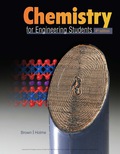
Interpretation:
The study has identified the obstacles to sustainable recovery and recycling of plastic solid waste which are technology, quality and demand, cost and capacity, market share and legislation and environmental concerns.
Concept Introduction:
The obstacles are slow upgrading of technology, limited number of machines, slow tooling sector, complicated mold design, bad trouble shooting in processing machine operations and requirement of variety of techniques.
There are also technical obstacles such as identification of sorting and collecting technology. The technical obstacles play major role in diminishing the recovery and recycling industries.
Answer to Problem 1CO
Solution:
The causes to obstacles in the recovery and recycling of plastic solid waste are analysed in terms of economic, environmental and social aspects of sustainability
Explanation of Solution
The causes to obstacles in the recovery and recycling of plastic solid waste in terms of economic, environmental and social aspects of sustainability are:
Economic aspects of sustainability include;
- Attractive export markets are at long distances.
- For recycled products there is relatively small local and regional markets.
- The level of export readiness is limited.
- The competition from imports is strong.
- The cost of input material is very high cost of input material.
- The cost of compliance is high.
- The cost of logistics is high.
- High labor cost.
- The capacity of collection is less.
- lack of producer responsibility.
- The research and development are limited.
- The technological upgrading has a slow pace.
- Manufacturing of limited machine.
- Weak tooling sector.
- Decrease in sorting facilities.
- Complexity in the mold design.
- Poor trouble shooting in operation of processing machine.
- Requirement of variety of techniques.
- The quality is determined by the price of the recycled material.
Scientific aspects of sustainability include:
- There is lack of certification to determine quality standards.
- There is lack of facilities required in quality testing.
- There is lack of plastic waste management in proper manner.
- There is lack of responsibility of the producer.
- Limited research and development.
- Low domestic demand for recycled products.
- The demand of high quality for recycled materials.
- Negative society image against the plastic industries.
The causes to obstacles in the recovery and recycling of plastic solid wastes are analysed in terms of in terms of economic, environmental and social aspects of sustainability.
Want to see more full solutions like this?
Chapter 10 Solutions
EBK CHEMISTRY FOR ENGINEERING STUDENTS,
- What are the major products of the following enolate alkylation reaction? Please include a detailed explanation as well as a drawing as to how the reaction proceeds.arrow_forwardA block of zinc has an initial temperature of 94.2 degrees celcius and is immererd in 105 g of water at 21.90 degrees celcius. At thermal equilibrium, the final temperature is 25.20 degrees celcius. What is the mass of the zinc block? Cs(Zn) = 0.390 J/gxdegrees celcius Cs(H2O) = 4.18 J/gx degrees celcusarrow_forwardPotential Energy (kJ) 1. Consider these three reactions as the elementary steps in the mechanism for a chemical reaction. AH = -950 kJ AH = 575 kJ (i) Cl₂ (g) + Pt (s) 2C1 (g) + Pt (s) Ea = 1550 kJ (ii) Cl (g)+ CO (g) + Pt (s) → CICO (g) + Pt (s) (iii) Cl (g) + CICO (g) → Cl₂CO (g) Ea = 2240 kJ Ea = 2350 kJ AH = -825 kJ 2600 2400 2200 2000 1800 1600 1400 1200 1000 a. Draw the potential energy diagram for the reaction. Label the data points for clarity. The potential energy of the reactants is 600 kJ 800 600 400 200 0 -200- -400 -600- -800- Reaction Progressarrow_forward
- Can u help me figure out the reaction mechanisms for these, idk where to even startarrow_forwardHi, I need your help with the drawing, please. I have attached the question along with my lab instructions. Please use the reaction from the lab only, as we are not allowed to use outside sources. Thank you!arrow_forwardHi, I need your help i dont know which one to draw please. I’ve attached the question along with my lab instructions. Please use the reaction from the lab only, as we are not allowed to use outside sources. Thank you!arrow_forward
- 5. Write the formation reaction of the following complex compounds from the following reactants: 6. AgNO₃ + K₂CrO₂ + NH₄OH → 7. HgNO₃ + excess KI → 8. Al(NO₃)₃ + excess NaOH →arrow_forwardIndicate whether the product formed in the reaction exhibits tautomerism. If so, draw the structure of the tautomers. CO₂C2H5 + CH3-NH-NH,arrow_forwardDraw the major product of this reaction N-(cyclohex-1-en-1-yl)-1-(pyrrolidino) reacts with CH2=CHCHO, heat, H3O+arrow_forward
- Draw the starting material that would be needed to make this product through an intramolecular Dieckmann reactionarrow_forwardDraw the major product of this reaction. Nitropropane reacts + pent-3-en-2-one reacts with NaOCH2CH3, CH3CHOHarrow_forwardIndicate whether the product formed in the reaction exhibits tautomerism. If so, draw the structure of the tautomers. OC2H5 + CoHs-NH-NH,arrow_forward
 Chemistry for Engineering StudentsChemistryISBN:9781337398909Author:Lawrence S. Brown, Tom HolmePublisher:Cengage Learning
Chemistry for Engineering StudentsChemistryISBN:9781337398909Author:Lawrence S. Brown, Tom HolmePublisher:Cengage Learning Chemistry: Matter and ChangeChemistryISBN:9780078746376Author:Dinah Zike, Laurel Dingrando, Nicholas Hainen, Cheryl WistromPublisher:Glencoe/McGraw-Hill School Pub Co
Chemistry: Matter and ChangeChemistryISBN:9780078746376Author:Dinah Zike, Laurel Dingrando, Nicholas Hainen, Cheryl WistromPublisher:Glencoe/McGraw-Hill School Pub Co World of ChemistryChemistryISBN:9780618562763Author:Steven S. ZumdahlPublisher:Houghton Mifflin College Div
World of ChemistryChemistryISBN:9780618562763Author:Steven S. ZumdahlPublisher:Houghton Mifflin College Div Principles of Modern ChemistryChemistryISBN:9781305079113Author:David W. Oxtoby, H. Pat Gillis, Laurie J. ButlerPublisher:Cengage Learning
Principles of Modern ChemistryChemistryISBN:9781305079113Author:David W. Oxtoby, H. Pat Gillis, Laurie J. ButlerPublisher:Cengage Learning ChemistryChemistryISBN:9781305957404Author:Steven S. Zumdahl, Susan A. Zumdahl, Donald J. DeCostePublisher:Cengage Learning
ChemistryChemistryISBN:9781305957404Author:Steven S. Zumdahl, Susan A. Zumdahl, Donald J. DeCostePublisher:Cengage Learning





